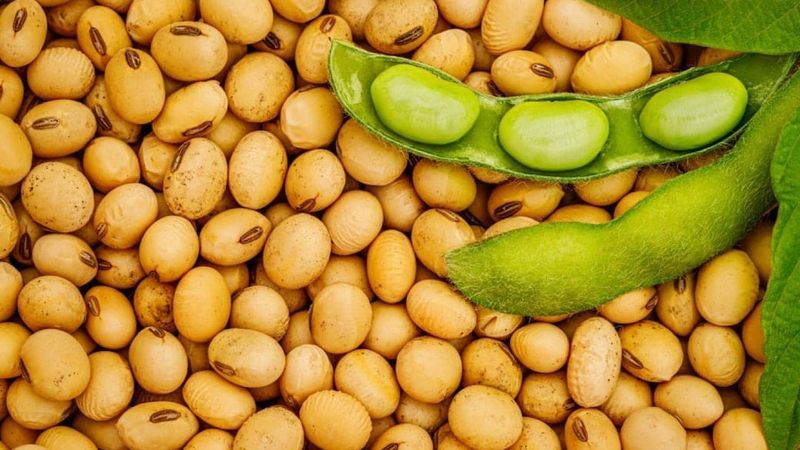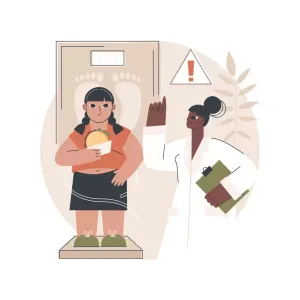

Our Review Process
Our articles undergo extensive medical review by board-certified practitioners to confirm that all factual inferences with respect to medical conditions, symptoms, treatments, and protocols are legitimate, canonical, and adhere to current guidelines and the latest discoveries. Read more.
Our Editorial Team
Shifa Fatima, MSc.
Author
Dr. Apoorva T, MHM.
MEDICAL ADVISOR
Is Soya Chunks Good for Diabetes
Many people wonder "Is soybean good for diabetes". In this blog post, we talk about why soya is one of the best diabetes foods available.
Soyabean for Diabetes - Soy is a natural protein substitute for meat products. Studies suggest that soy plays a big role in lowering blood sugar levels, cholesterol, and bringing down blood pressure - all of which help in fighting diabetes, and lowering the risk of heart disease and/ or a stroke. Soy therefore is a great substitute for improving overall health. Soy isoflavones are also known to be a healthy substitute for those fighting liver cancer or nonalcoholic steatohepatitis.
Foods that contain low levels of sugar generally help avoid experiencing a spike in blood glucose levels during diabetes. On the other hand, foods that help your body process sugar more efficiently will also help you avoid such a spike such as soya beans.
Table of Contents
Can Diabetics eat Soya Chunks
Soya beans are essentially legumes that can be consumed in various edible forms like flour, tofu, soya milk, soya sauce, and as soya chunks or granules. In India, a wide variety of dishes are made with soya beans, including pulao (rice), dal (lentils), and curries featured in regional cuisines.
The answer refers to its main benefits of being affordable and rich in vitamins, which is truly the best thing about it as more people are becoming aware of health issues.
Research shows that soya beans help lower cholesterol and lessen the risk related to cardiovascular diseases and the risk of getting Alzheimer's disease. This is because it has a high concentration of plant-based chemicals known as 'phytonutrients,' which help increase blood circulation.
Is soybean good for people with diabetes? Eating soya beans is more helpful than supplementing your diet with extra vitamins and minerals acquired from other sources. It has a low-calorie content while still containing fibre, vital for digestive health. People with diabetes should include soya bean in their meals to assist them in maintaining stable blood sugar levels as it makes them feel less hungry throughout the day.
It delivers a slow-release energy source that keeps you going without increasing your blood sugar after just one or two bites, as artificial sweeteners do, leading to long-term health concerns.

Benefits of eating Soyabean for diabetes
- They are a rich source of fibre and protein.
- They are rich in omega-3 fatty acids.
- They are high in phytoestrogens and are also a good source of antioxidants.
- Their low saturated fat content and the fact that they're cholesterol-free and lactose-free make them the perfect snack.
- They help in lowering blood pressure.
- Soya beans help improve bone health and blood vessels, such as the greater elasticity of artery walls, cognitive function, and visual memory.
- It also protects against some cancers, like breast cancer.
How can you eat soy beans if you have diabetes?
Can individuals having diabetes eat soya beans? Yes, individuals having diabetes can eat soya beans. Soya beans are available in multiple forms, each providing different health benefits. Here you can find some amazing ways to consume soya bean:
1.Soya bean Flour
Please take out wheat from your diet and replace it with soya bean flour, especially to make roti.
2.Soya bean Dal
Soya bean dal can be prepared instead of regular pulses.
3.Soya bean chunk Tikkis
To give it that extra masala kick, roast some soya bean chunks and spice them up!
4.Tofu Salad
By adding tofu to salads, you can increase the intake of soya beans.
5.Soya Milk
Consider substituting animal milk with soya milk in cold coffees and smoothies.

Things you need to keep in mind while eating soya beans
1. Combine it with appropriate components.
Soya beans are notorious for containing gluten. Some studies suggest that this particular ingredient may not be best for proper digestion because of how it tends to interfere with insulin levels.
There is a way to eat edamame, which are the beans still in their shelled and green pod, and that method is called eating an entire soya bean. The reason this works better than the pods themselves is because edamame beans can be found in their most natural state and therefore provide more nutrients instead of simply just being a dish that's prepared and eaten.
2. Moderation is key when consuming it.
It can help you stave off toxins and keep your system running smoothly when consumed in moderation. However, an overindulgence of this food item can negatively result in a hormonal imbalance that affects your body's overall functioning. This can be detrimental to your health. You might want to avoid this unhealthy addition and stick to a normal diet or else you might have a bad time! It is generally enough to consume around 30 to 50 mg of isoflavones per day to reap health benefits.
Some examples of foods with a high isoflavone content include:
| Item Name | Quantity | Isoflavone Content |
|---|---|---|
| Soya beans | ½ cup | 40 to 75 mg |
| Soya flour | ¼ cup | 45 to 69 mg |
| Soya milk | 250 ml | 15 to 60 mg |
| Tofu | One 115g block | 13 to 43 mg |
| Tempeh | One 110g block | 41 mg |
| Soya yoghurt | One container | 26 mg |
| Soya bread | 2 slices | 7 to 15 mg |
| Soya sauce | One teaspoon | 0.4 to 2.2 mg |
Bottomline
As long as you are eating soya in moderation and not relying on it to replace other foods, it can provide you with many health benefits. We hope you enjoyed our post on the topic:- is soya bean good for people living with diabetes? Thank you for reading; we hope you find this information useful!
References
- https://timesofindia.indiatimes.com/life-style/food-news/is-soyabean-beneficial-for-diabetics/photostory/72319972.cms
Disclaimer
This website's content is provided only for educational reasons and is not meant to be a replacement for professional medical advice. Due to individual differences, the reader should contact their physician to decide whether the material is applicable to their case.








